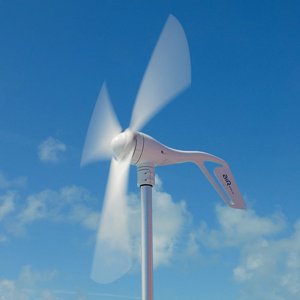
By Greentech Lead Team: Interest in distributed energy generation is
driving growth in small wind power, according to Pike Research.
Despite the
rapid drop in solar photovoltaics (PV) prices over the last three years, small
wind turbines are still a more cost-effective source for distributed renewable
energy in many parts of the world.
Increased
government incentives, the desire for customer and community ownership of power
generation, and the recognition that investment in small wind turbines can be
an enduring source of economic development for the rural locales in which they
are typically deployed are driving accelerating growth for the small wind power
market.
Global
revenues for small wind systems will more than double between 2010 and 2015,
rising from $255 million to $634 million during that period.
Interest in
wind power and other forms of renewable distributed energy generation has
revived; large corporate investment has led to the development of larger wind
turbines and utility-scale wind farms, but consumer demand is driving the
growth of the small wind power market as well.
“Despite the
rapid drop in solar photovoltaics (PV) prices over the last three years, small
wind turbines are still a more cost-effective source for distributed renewable
energy in many parts of the world,” said senior analyst Peter Asmus.
Communities
are recognizing the benefits of renewable distributed generation for local
economies, particularly in rural areas or underdeveloped regions with abundant
local resources. Developing those resources benefits local economies by keeping
the dollars spent on energy in the community and creating jobs and possible
export revenue.
One
increasingly popular business model in the wind industry is known as “community
wind,” which refers to wind generation assets that are owned by a group of
local people who create a Limited Liability Corporation that then enters into a
power purchase agreement with the local utility. Common in parts of Europe such
as Denmark and Germany, community wind is emerging in rural, windy areas of the
United States as a vehicle for economic development, especially in Minnesota
and Iowa.
